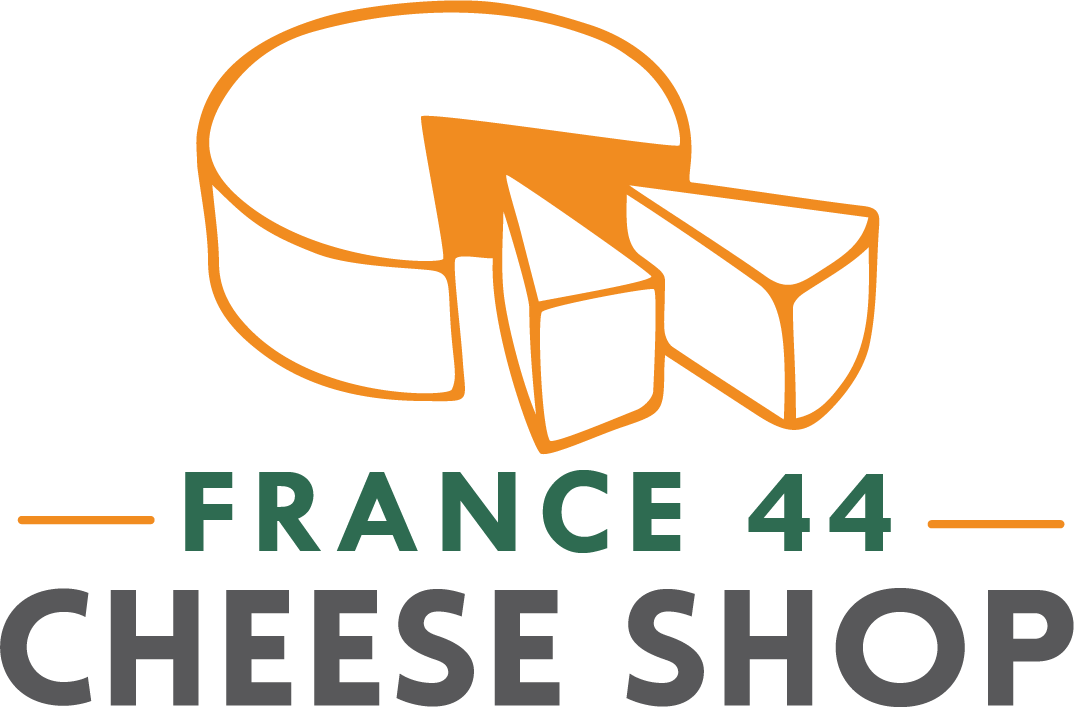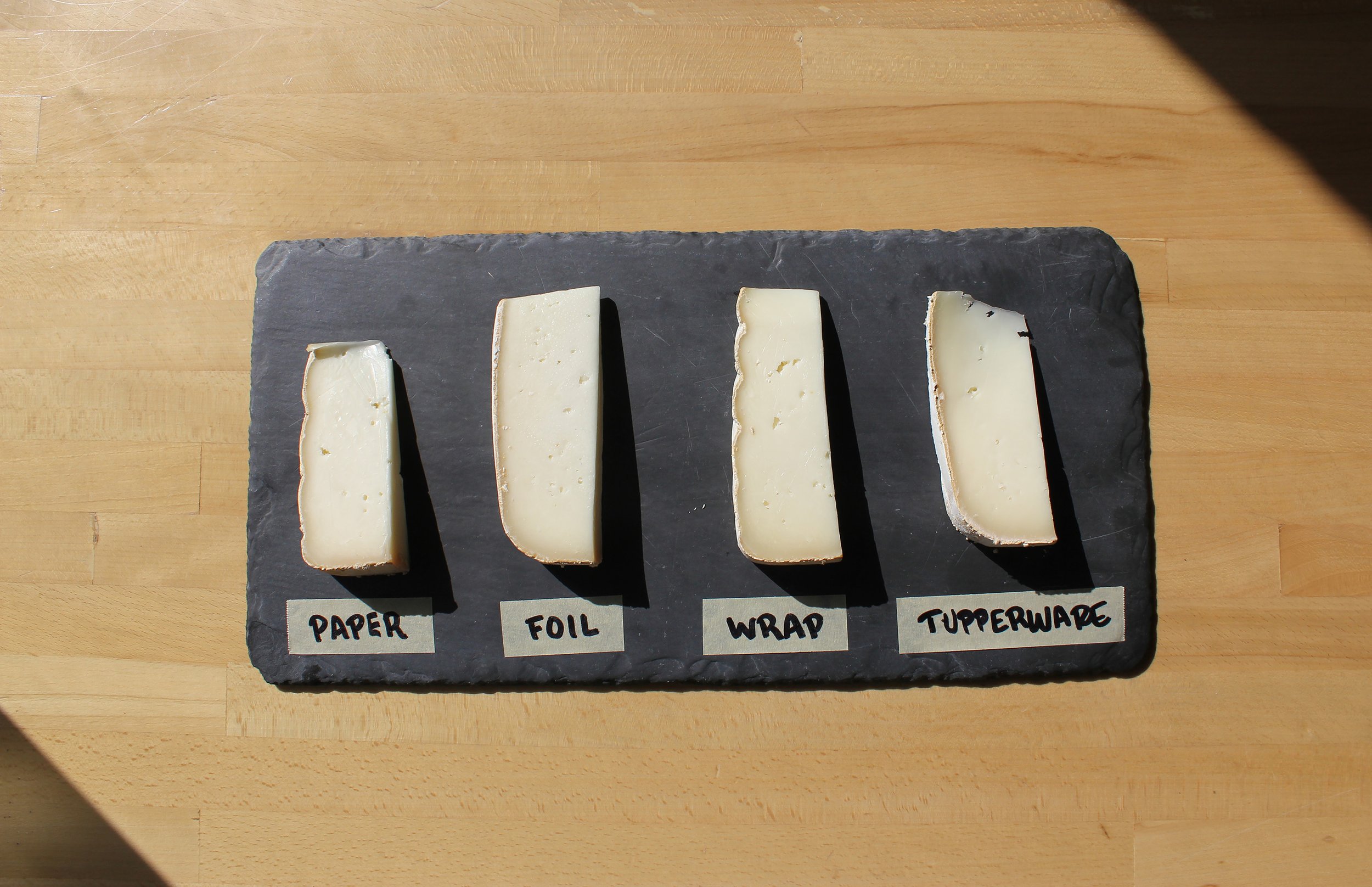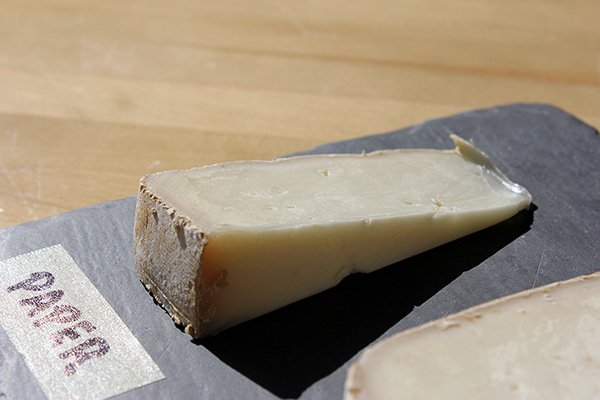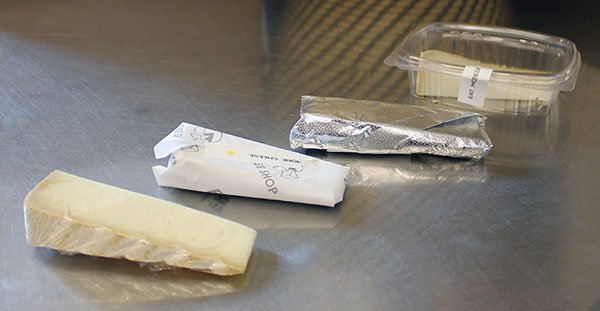La Cabezuela Tradicional Semicurado
by Austin Coe Butler
Juan Luis Royeula and Yolanda Campos Gaspar needed a change. The couple was doing well in their respective careers in communications and journalism, and Spain in the 80s and 90s was marked with a certain optimism after Franco’s death opened the country economically and culturally, but the two were dissatisfied. Juan Luis, uncertain, searching for his life’s passion, took a cheesemaking workshop on a whim, and in an instant he recognized his life’s passion. Juan Luis and Yolando quit their jobs, and in the process of making their passion their profession, they not only found themselves, but brought a local breed of goat from the brink of extinction, revived a failing, rural dairy, and preserved a rare, traditional Spanish cheese.
First, the Royuela-Campos family had to find a dairy to make cheese. In the small, rural town of Fresnedillas de la Oliva, which Juan Luis describes as “close to everywhere and far from anywhere,” they found the ailing Quesos La Cabezuela. Quesos La Cabezuela was a small, family run quesería specializing in goat’s milk cheeses that had fallen on hard times. It was on the brink of foreclosure when Juan Luis and Yolanda found it. Fresnedillas de la Oliva is on the western border of the Madrid region, and Quesos La Cabezuela is a tight, rustic operation. All of Juan Luis’s cheese making, aging, and selling happen within just a few footsteps. But that was all the space Juan Luis and Yolanda needed.
Next, the goats. Juan Luis learned of the Guadarrama goat that lives in the sierras, or mountains, surrounding Madrid, and are found nowhere else in the world. These elegant goats, streaked black and white with thick tufts of hair, are hardy yet graceful on the rocky terrain of the dehesa landscape, where they graze on pastures of thyme, heather, and grasses studded with acorns, imbuing their milk, and the cheese, with the region’s unique terroir. They easily endure the cold and rainy climate of the Guadarrama. Despite their hardiness, the Guadarrama were on the brink of extinction. They are not a meat breed, and they produce very little milk—whereas most goats produce between 3 to 4 liters of milk per day, the Guadarrama produces a mere 2 liters. For these reasons, the goats were rarely bred. In the mid-90s though, thanks to an association of farmers and cheesemakers like Juan Luis, the Guadarrama goats have been brought back from the brink of extinction. Juan Luis fell in love with these gregarious creatures and decided to make all of his cheeses exclusively from their milk. La Cabezuela works only with shepherds who have 100% Guadarrama goats. Despite these conservation measures though, there are still only 10,000 at present.
At last, there is the cheese. La Cabezuela Tradicional is remarkable for many reasons, but there are two features that are especially unique. First, it is maybe the only historically Spanish soft-ripened goat cheese. Other Spanish soft-ripened or bloomy-rinded cheeses like Veigadarte or Cana di Cabra were imported from France in the immediate post-Franco years. Few traditional Spanish cheeses survived the Franco years, with the functional ban on artisanal cheese production. The recipe for this cheese dates back to 1750, when it was a family farm cheese, and was kept alive by only a few cheesemakers through those dark decades of repression.
What’s equally unique is that La Cabezuela Tradicional Semicurado is really old for a bloomy rind cheese. Spanish cheeses labeled semicurado, or “semi-cured,” are aged between four to six months, and curado cheeses are anything past this. Manchego and Mahón, those firmer, more well-known cheeses are often aged at these profiles, but four to six months is a long time for a soft, bloomy rinded cheese! For context, think of having a piece of brie, camembert, or a Chabichou for six months. It would be pretty crusty and unpalatable. Instead, La Cabezuela Tradicional is able to retain moisture and its soft bloomy rind while developing flavors often found in older cheeses. It’s able to mature for this long because of its larger size and brining. Once the cheese is removed from the brine, it is delicately hand salted and allowed to mature for two months, creating an ideal environment for Penicilium and Geotrichum molds to bloom, binding the cheese together, and developing delicate white mushroom flavors. Some of our wheels of La Cabezuela Tradicional have a really unique cadmium orange mold called Sporendonema casei, which is only found on cheese and in cheese caves. While orange mold may instill fear in some, this mold is beneficial and is actually considered a desirable trait by cheesemakers, including Juan Luis, and cheese connoisseurs as an indicator of superior flavor. Cheeses with this mold often have a complex nutty and mushroomy flavor.
Eating La Cabezuela Tradicional is kind of like eating three cheeses in one. The delicate mushroomy, brassicaceous rind is reminiscent of a farmhouse brie, while the cream line has a malty, buttery flavor that gives way at last to a sherbert-like center that is bright, tangy, and herbaceous. La Cabezuela Tradicional Semicurado is many lofty things: a cultural and gastronomic expression of a tradition in a modern and sustainable way; the discovery of a life’s passion. It’s also simply a phenomenal cheese.







